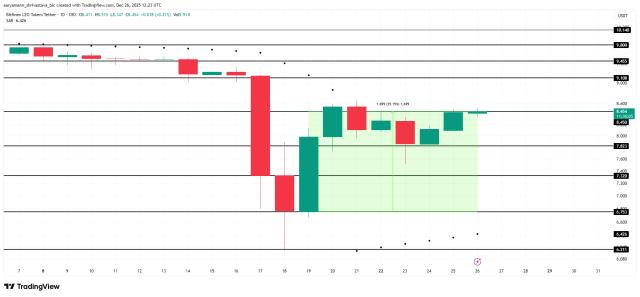Author: Frank, PANews
Since the start of this bull market cycle, MEME coins, inscriptions, and airdrops have been constantly grabbing attention, while the expected price surge of once-mainstream tokens has not materialized, and the airdrops of several star projects have disappointed the community due to lower-than-expected results or price declines.
In contrast, MEME coins have gradually become an important barometer for the entire crypto industry, from a niche sub-sector. Why are mainstream tokens no longer favored by the public? Why are more and more mainstream institutions starting to shift their holdings towards MEME coins? What potential changes have occurred in the rise of MEME over the past year? Can this prosperity be sustained? With these questions in mind, PANews has conducted research and reflection on the development of MEME.
Compared to mainstream coins, MEME has a greater wealth-creating effect
In the past year, the performance of the mainstream coins we are familiar with has generally been unsatisfactory, and several highly anticipated airdrop projects have also failed. Against this backdrop, the wealth-creating myth of MEME coins has been frequently reported, so does investing in mainstream value coins really not make money anymore?
According to a report by Keyrock, the prices of most airdrop projects in 2024 will collapse within 15 days, and 88% of the tokens will plummet significantly within three months.
To make a comprehensive comparison, PANews has compiled the performance of some previously popular tokens in mainstream public chains, blockchain games, the metaverse, inscriptions, airdrops, and old-school MEME coins from January 1, 2024 to October 15, 2024. The data shows that among these token categories, only old-school MEME coins and mainstream public chains have seen an upward trend this year, while the average decline of popular airdrops or inscriptions with high initial hype is around 50%, and the blockchain game and metaverse sectors have declined by 23% and 52% respectively.
It can be said that apart from a few popular public chains (such as SUI, TON, BNB), the performance of other mainstream tokens is not as good as Bitcoin. This comparison does not even include the emerging MEME, as these new popular MEME coins are "rising to impress" due to their low initial market capitalization, making it easy to achieve hundred-fold or even thousand-fold gains. It can be said that the main reason for MEME replacing mainstream coins is its more attractive market performance.
Narrative logic and changing thresholds
The narrative of mainstream projects has always seemed to be their most important foundation. From the early Ethereum smart contracts, to the third-generation public chains like EOS, to the later Layer 2, cross-chain, metaverse, blockchain games, and now re-staking, Bitcoin ecosystem (inscription parallel chains), social, and AI, etc. One major change is that the technology appears to be getting more and more sophisticated, with a proliferation of new terms and new gameplay. These changes stem from the crowding of mature tracks, which necessitates the creation of new tracks to better achieve financing. On the other hand, the design of airdrops becoming a points-based gameplay, and the increasing thresholds for tasks like minting inscriptions and coding, have left retail investors dazzled and confused, hindering the entry of more new users.
But the narrative of MEME is completely different - a simple narrative, an image, a term, a symbol, relying solely on a cultural gene that everyone understands to gather consensus. People don't need to understand the logic behind the technology, nor do they need to painstakingly investigate whether the project team has truly achieved those technological innovations.
On the other hand, with the rise of Solana, the code vulnerabilities such as honeypots and inflation that previously ran rampant on Ethereum have been greatly reduced, undoubtedly lowering the barrier for ordinary users to enter the MEME space. This year, the MEME sector has seen the emergence of more and more tools, further enhancing the MEME experience. For example, platforms like Dexscreener and Birdeye have successively supported price charts for tokens across more chains.
The widespread adoption of one-click token issuance platforms like Pump.fun has made the biggest contribution to MEME. As these tools become mainstream, MEME coins seem to have completely solved the problem of code vulnerabilities, allowing the cultural attributes, capital, and community that are unique to MEME to play a more direct role.
These changes reflect two trends in the crypto community, like the two ends of a scale - on one end, new projects are becoming increasingly complex with higher participation thresholds, while on the other end, MEME coins are becoming more accessible through minimalism and professional division of labor.
In a market with limited on-chain capital and users, the scale is now tilting towards MEME.
Public choice, capital follows
As retail investors become enthusiastic about MEME coins, institutional capital also seems to be starting to allocate resources in this direction. According to Lookonchain's monitoring, Wintermute has been accumulating NEIRO (an Ethereum-based MEME) since September 6, with a cumulative holding of 62.45 million NEIRO (worth $7.39 million), accounting for 6.25% of the total supply. NEIRO is one of Wintermute's largest MEME coin holdings. On October 11, according to monitoring by The Data Nerd, in addition to Wintermute, three market makers (MMs) and one venture capital firm also hold the $NEIRO_ETH token.
According to data provided by @thedefiedge, as of October 15, Wintermute held PEPECOIN worth about $10.52 million, making it the third-largest token in its portfolio, and NEIRO worth $3.48 million. It has become the market maker with the largest known MEME coin holdings. In addition, Jump Trading also holds $1.2 million worth of SHIB.
Recently, Gotbit, who has been indicted by the U.S. federal prosecutor, was also identified as a market maker for Neiro, and other MEME projects like Beercoin, WaterCoin, and Hamster Kombat have also urgently clarified or distanced themselves from Gotbit after the incident. From these news, it is not difficult to see that professional market makers' participation in the MEME coin market has become a relatively common occurrence.
Moreover, based on PANews' analysis of popular MEME coins, in order to avoid on-chain hunters' tracking, market makers often choose to manipulate the MEME market through measures like dispersed wallets, batch purchases, asset transfers, and hidden liquidations. These operations have also made the true proportion of institutional holdings in MEME a mystery.
From the perspective of capital, it is not difficult to discover the motivations. In mainstream value project investments, VCs not only need to make a large one-time capital input, but also need to wait a relatively long time for the project team's development and operations. They also need to design mechanisms like airdrops and points to attract users, and often require long lock-up periods before they can realize their investments. Investing in MEME coins, on the other hand, is relatively simple - choosing targets that have been market-tested, directly holding unlocked tokens, and being able to trade and realize profits at any time due to their higher capital strength, which better aligns with the interests of capital.
From Ansem to Murad, a new generation of MEME gods emerges
Recently, Murad has become the new MEME legend with his "MEME Coin Super Cycle" presentation and over $24 million in MEME coin holdings, while the previous MEME god Ansem seems to be facing doubts. Beyond the achievements of these MEME high-level players, we may be able to see some notable changes in the playing styles of MEME investors.
Ansem first made his fortune with the WIF token. His overall style is more inclined towards "diamond hands", that is, lying in wait early on and buying in with a small amount of capital, then selling out when the price reaches a high point. This style was quite prevalent among MEME players in the past, with players focusing a lot of effort on finding potential MEME coins and trying to buy in as early as possible. But this approach undoubtedly has a huge probability of error, and once they encounter a crypto honeypot or malicious manipulation by the issuer, it will result in huge losses. Ansem is obviously an early practitioner of this style, and he is always able to discover these potential tokens in their early stages and realize profits.
Murad's breakout, on the other hand, represents another style of operation that is becoming mainstream. According to Murad, his reference standards for MEME coins are as follows: mid-cap coins between $5 million and $200 million; located on Solana and Ethereum; with at least a six-month history. From these standards, Murad prefers to look for relatively mature tokens, rather than expecting to buy in at the earliest stage. In addition, compared to Ansem's frequent buying and selling, Murad's trading frequency is much lower, with many tokens held for several months, a more investment-like style similar to the way institutions have previously invested in mainstream value coins.

MEME season: Decline or new opportunity?
From the industry as a whole, mainstream value projects are still the mainstay of the industry, and are also the investment targets that capital and institutions are more recognized. Therefore, many believe that the prosperity of MEME coins will further damage the value system of the crypto world. If you can just manipulate the price and maintain the community to gain a lot of wealth, then how many people will be willing to work hard on technological innovation and drive the transformation of the entire industry and even the Web2 world in the future?
This is indeed a concern worth noting. Counting the MEME coins that have become famous, it is rare to hear that the project parties or communities of these tokens have introduced any innovative technical solutions and governance templates to the entire crypto market. Instead, with the heat of MEME, the on-chain hackers, sandwich attackers, and MEME packaging teams are making a fortune. Whether the retail investors' earnings level has truly improved is still debatable.
However, if we separate cryptocurrencies from blockchain technology, technology is technology, and MEME coins represent the development trend of cryptocurrencies as asset attributes. Behind the mainstream value coins, those projects with real technological innovation will still be recognized by capital and the market, and what MEME coins will eliminate are just some false project coins disguised as technology. As Murad stated, ordinary investors are gradually realizing that the token itself is the product, not the software. He believes that the current crypto industry is still an industry dominated by asset production, and technology is just an accessory.
Therefore, the trend of MEME becoming mainstream seems to be a fact, and for speculative players, profit-seeking is a natural goal. The decline of mainstream value coins poses a challenge to the previous VC value system, and it's time to reflect and change, and regain their own stage.







